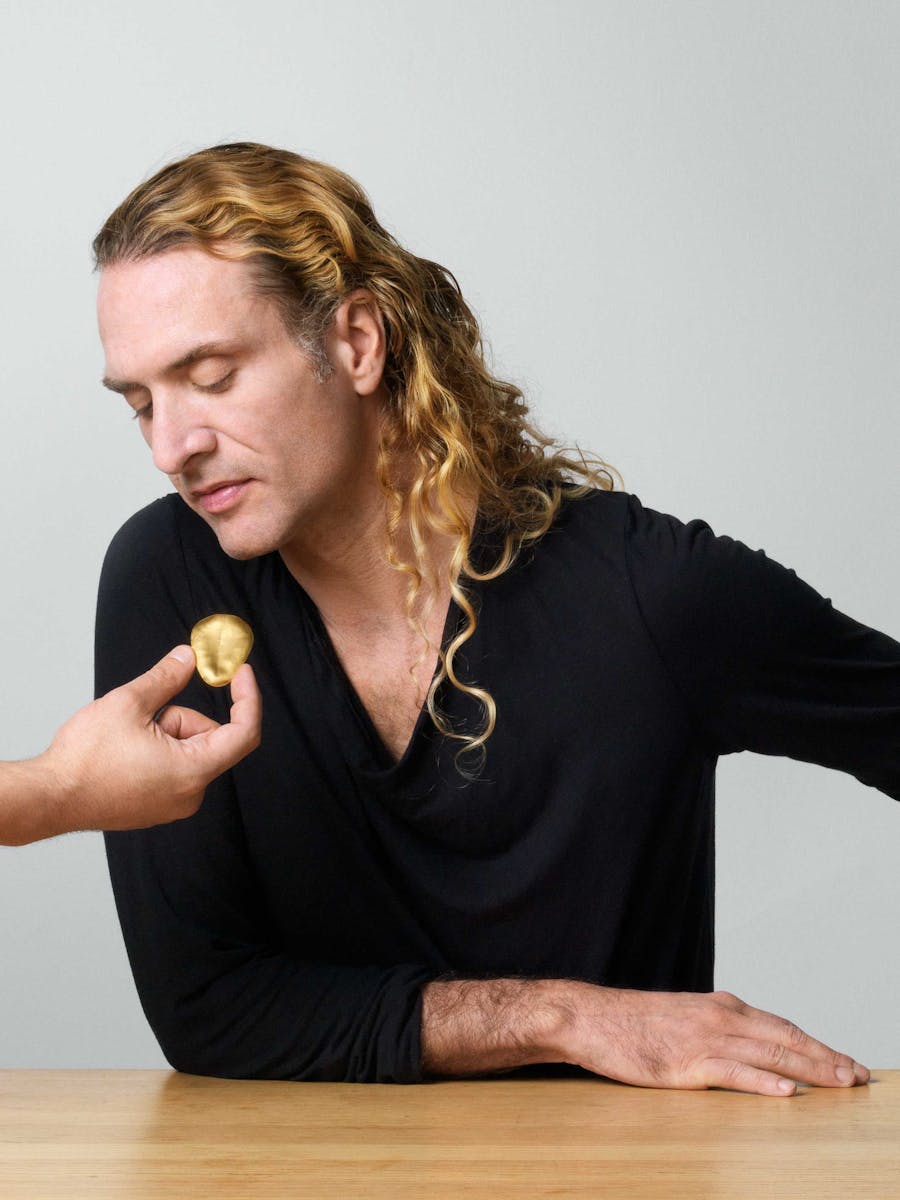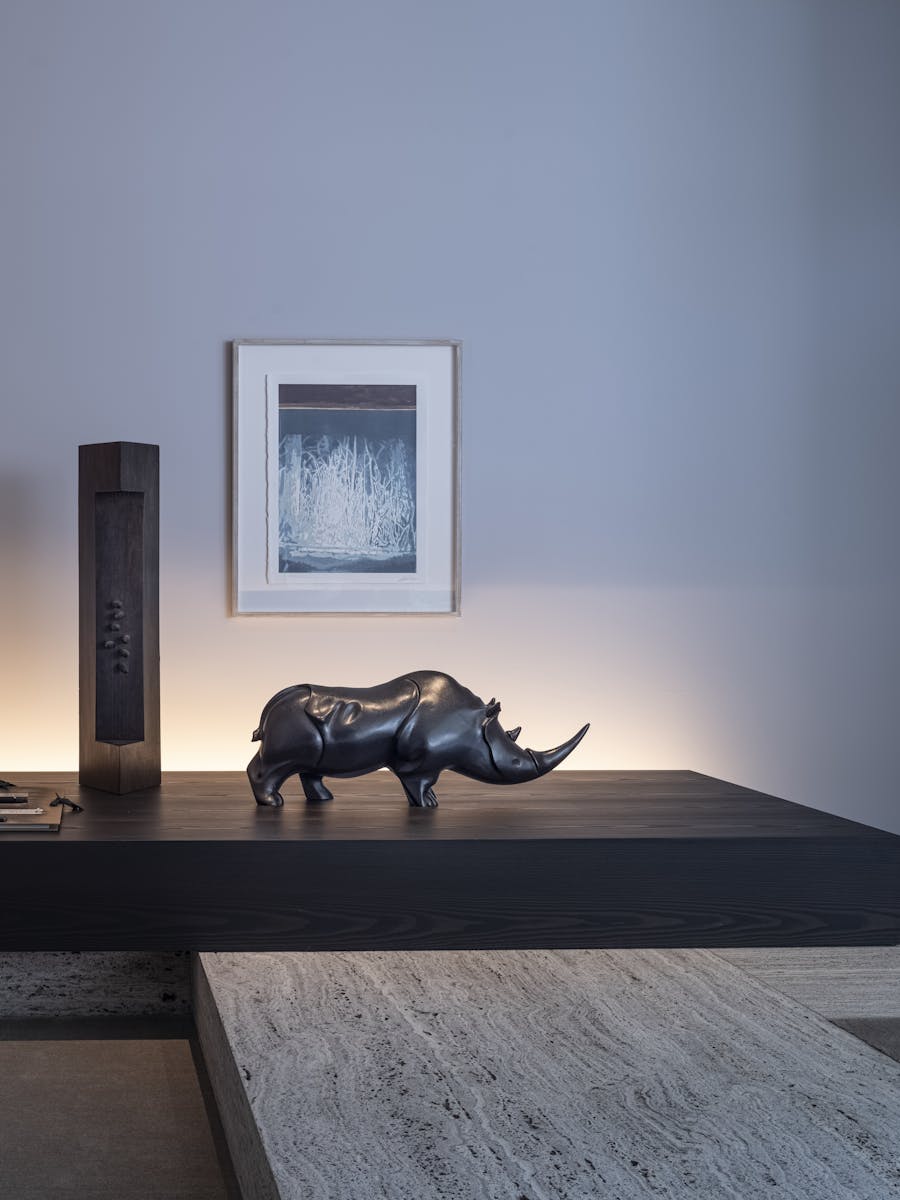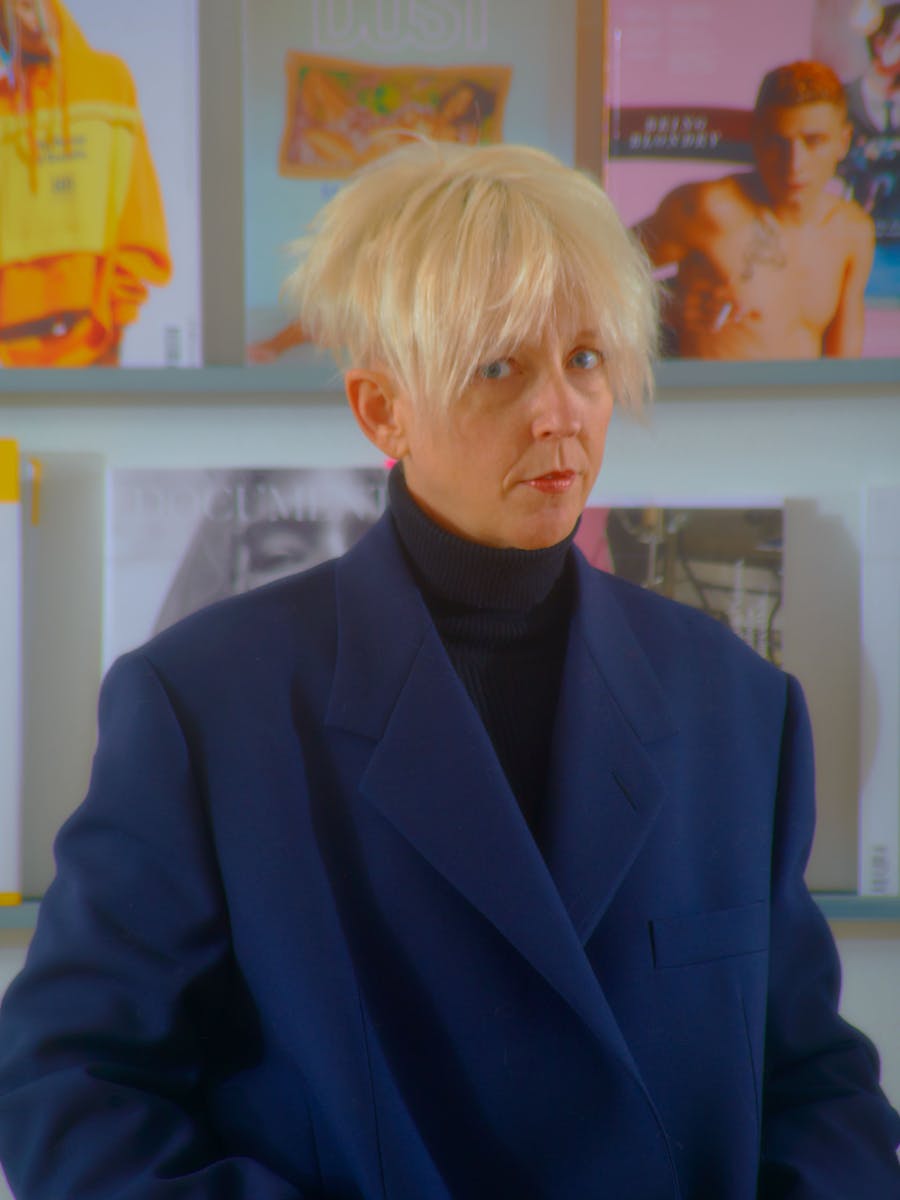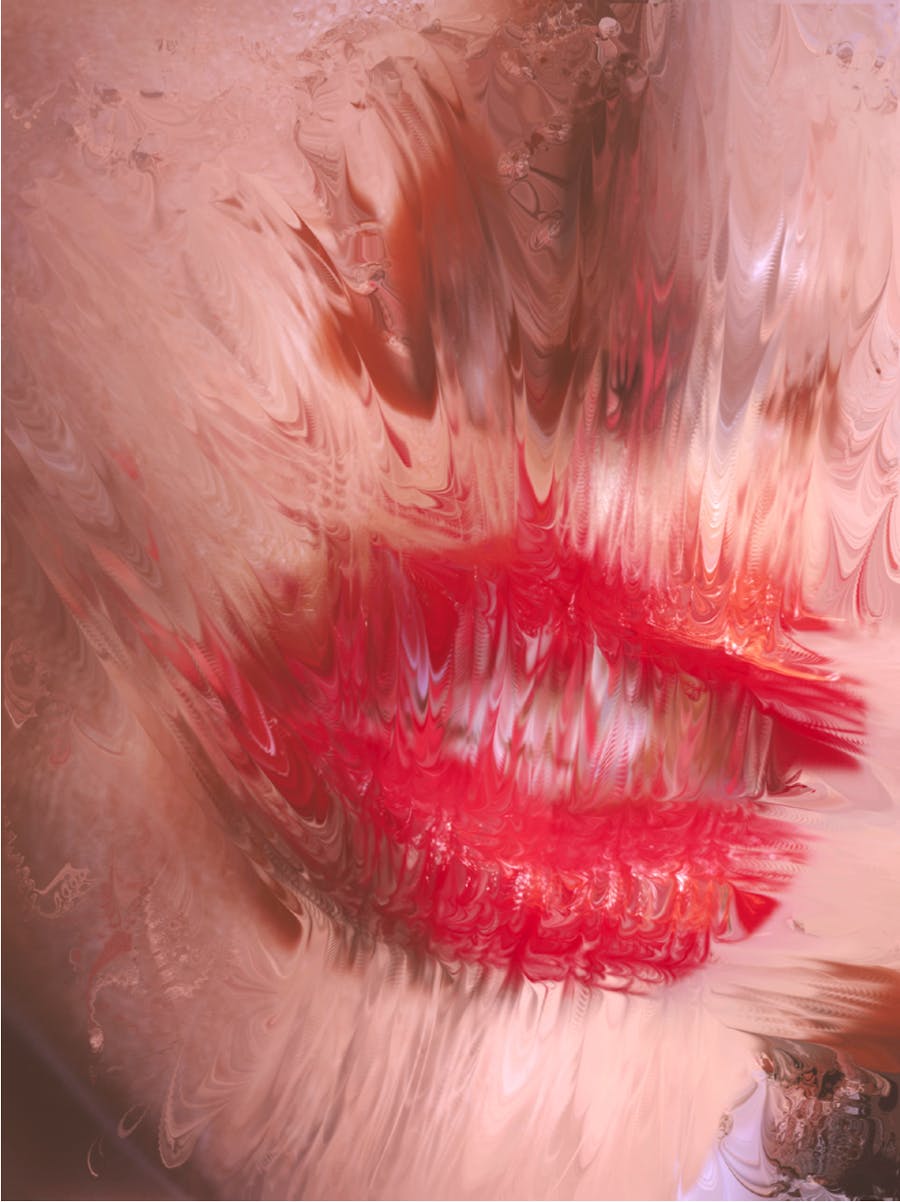The work Coluna (Agachado), 2013, by Brazilian artist Tatiana Blass is a wax sculpture representing a human figure constantly transforming and dissolving.
Technically, it is a “sculpture in action” because the wax melts progressively due to the heat generated by an electric resistance located under a brass slab. The figure sits atop this slab or, more precisely, crouches on it.
The use of wax is not incidental. Wax subtly passes from a solid to a liquid state and vice versa, allowing for a slow movement of the matter. Inside the sculpture is a spinal cord made of bronze that slowly emerges as the wax is melting.
The head, arms and knees melt first, creating the impression that the body is gradually disappearing into a hole in the slab. Towards the end of the process, the torso melts away, clearing the spinal cord that, in turn, separates from what is left of the body.
The spinal cord, which is normally a key bodily element for locomotion and flexibility, looses its function. Here, it is made of one piece of metal : the vertebrae are pasted together. Therefore, the spine remains completely stiff and still. It does not follow the movements of the body induced by the heat.
From a poetical point of view, it is a “Performance sculpture” since the wax, through its spontaneous reaction to the heat, dissolves and ends up dispersing randomly. A “liquid accident” one could say, which evokes the process of saying farewell. Through its inherent fragility, the figure stages its own disappearance. Far from the statues found in wax museums around the world, for ever rigidified in a controlled setting, Tatiana Blass’s Crouched uses wax’s inherent quality.
From a philosophical point of view, it is a “Accidental sculpture”. That is to say a sculpture created by the converging forces of time and space. If time is movement in space, the act of resting then is the illusion of the absence of time. In this piece, there is an invisible tension that causes a seemingly resting figure to move. The slower the movement, the less perceptible time is.
On the other hand, the sculpture also reveals a time taken by fatigue, where the shape permeated by forces previously concentrated dissipates. Existence always comes to an end but the piece is less a representation of the imminence of this end than it is an embodiment of this end. It also stresses the fact that notions such as transformation and discontinuity might be applied to the present condition of art and the limits of sculpture as an art form. Tatiana Blass’s “Sculptures in action”, “Performance sculptures” or “Accidental sculptures”, which she has been making since 2010, seem to examine the edges of aesthetic experience. The power to create and the power to exhaust. The power to expand and the power to confine. All of which in the end, almost certainly lead to invisibility and silence.



